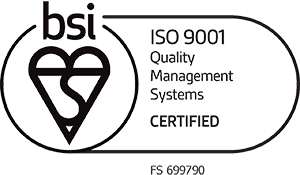Timber Floor Coatings are YOUR CHOICE … take care to choose the coating that suits your needs!
In the not too distant past the sanding and finishing of a timber floor was a relatively straight forward task with a three coat system of gloss polyurethane being used in most instances. Due in part to this, a resurgence in other technologies particularly with the advent of metalised polishes and waterborne technologies, the choices of coating have greatly diversified.
A search on the internet quickly reveals that a wide range of coatings are now available and that many manufacturers are able to supply a full range of coating types. You will find brand names that are quite familiar to you and others that you probably have not heard of. As such your choice of coating is much greater now than in the past and while this should be seen as a positive, it can also be somewhat bewildering to those with limited knowledge about coatings and coating types.
In addition to this contractors are unlikely to be familiar with all the options available and will tend to favour the range of coatings they more frequently use and have sound knowledge of and experience with. Due to this, today’s reputable coating contractors are constantly involved in updating their knowledge to keep abreast of the frequent changes in this developing industry. For this reason the ATFA plays an important role in providing not only training but also an avenue for networking and providing up to date information to their members.
Most contractors will have the skills to use any coating type, however each coating will have its specifics and due to this some time in research and support from the product supplier may be necessary and is important. This is particularly so if the chosen coating system to be used differs from that more commonly used or recoating over an existing finish system is being requested. When choice is available for any product there is also varying quality and price differences between products. This too is true for floor finishes and due to the nature of some coating systems there can be a significant variation in overall project costs depending on the option chosen. Similarly those products of lower quality can be more prone to problems at time of application or in ongoing performance.
In this article we are specifically concerned with the regular levels of confusion and potential disappointment expressed by flooring contractors, architects, building managers, and the general public alike, regarding issues that often stem from coating selection. This aspect should not be treated lightly. Although the process of preparing and coating a floor is relatively “inexpensive”, especially when compared to the purchase and installation costs of timber flooring, an unsuitable coating choice can result in expectations not being realised with short lived enjoyment of a new or rejuvenated timber floor. For the consumer, appearance, durability and cost are generally the key factors.
A poor choice of coating will ultimately result in disappointment and often additional expense in extra work necessitating possible re-sanding or recoating. It cannot be over emphasised that choosing the right coating for your requirements will greatly reduce the likelihood of any potential problem down the track.
As the owner, specifier or recipient of a new floor, the most important fact to be recognised when considering the coating type is ‘does it fit’ your project? All floor coating types are suitable for specific applications. The difficulty lies in balancing up the attributes of each coating type to ensure that you select one that is going to be highly suitable. Good coatings in wrong applications result in poor performance – not bad coatings! For the contractor the most important information is provided by the product manufacturer. This information needs to be followed, enquired about, even debated, but never ignored. Coatings can be complex and you can be sure significant time has been spent in research and development before the product enters the market. The product information is what enables the contractor to both apply coatings correctly and advise clients accurately as to the suitability of a coating system for a particular project (appearance, durability, cost, application considerations and environmental considerations).
When researching products always consider the variety of timber floor coating technologies available, each will have its benefits and limitations and that the balance of these will differ from project to project. It is also necessary to ensure that coating decisions relative to your requirements are made based on accurate and complete information.
It is generally the owner’s choice as to what coating or coating type is applied to the floor and the contractor is often called upon for advice. So what steps are involved in selecting a coating system that needs to be considered by both the recipient of the floor and the contractor for a particular project?
- Firstly, a selection of suitable floor coating type alternatives should be developed that are most appropriate to the project.
- Considering the broad coating groups, the visual effects they provide should be considered and ones selected that fit preferences.
- The benefits and limitations of this ‘control group’ should then be assessed for the type that will best meet the requirements of the project.
From this, particular manufacturer products within that group can be assessed and an informed choice made. However the basis for selection does not end there! Of equal or greater importance is what the recipient of the floor is prepared to do to keep the floor looking good! No matter what angle you take, ‘MAINTENANCE’ is the key aspect that ensures the ongoing appearance of a floor. It must be stressed that all coated timber floors will require some level of activity to keep them clean and to prolong their original aesthetic qualities for as long as possible. This includes:
- regular sweeping,
- dust catching mats at external doorways,
- prompt cleaning of spills,
- occasional mopping with a recommended cleaning product,
- felt pads on chair legs and other moving furniture,
- sealing paved/concrete area’s abutting entrances,
- regular monitoring of wear to plan for any remedial coating requirements,
- not wearing street shoes on the floor where possible and avoiding leather soled shoes and stilettos as damage is accelerated by the combination of dust, grit, and aggressive foot traffic.
These tasks are not debatable. They can be regarded a minimum requirement of owning a timber floor. However, the frequency that these tasks are carried out, as well as additional maintenance activities, is what sets different floor coating technologies apart. Put simply a lot depends on what the recipient of the floor is prepared to do ‘for their floor’. Aspects such as traffic type and level of traffic, flooring environment (e.g. residential or commercial etc) is what will greatly influence the coating decision.
If as an owner or specifier you are unable to determine a suitable coating using these considerations, then an industry professional should be consulted to assist. Though remember, although a contractor or similar professional can assist with technical information, the owner, or person specifying on behalf of the owner, should be the one choosing the finish, as they are the ones also determining the acceptable degree of ongoing maintenance.
Assuming as an owner that you have made your choice and ultimately the prolonging of the ‘original’ appearance of your floor is the ideal, maintenance is accepted as reality. Start with this understanding and it is more likely that you will be satisfied with your floor coating choice.
Coatings are made to protect and beautify timber flooring, but from day one the various degrees of foot traffic will begin the deterioration process that can only be managed and replenished by the “owner” or caretaker of the floor. If that happens to be you, then it is important that you make your coating choice carefully, as it is your floor and your choice that will be on display, now, in twelve months, in five years, a decade; so choose wisely.
Floor finishes – types and characteristics
The coating system that is ultimately chosen for a site sanded and coated floor will depend on a variety of considerations. In some instances the coating system will be specified and this is generally the case for commercial projects. However, with domestic floors it is often the client that requests a specific coating type or the client is expecting the contractor to provide information from which they can make an informed decision. If a coating is specified, it is still necessary that the contractor considers the consequences of using that coating and informs client about any reservations with regards to the advantages and disadvantages of the proposed coating system.
Aspects relating to coatings that may need to be considered and conveyed to the client include issues such as potential health hazards and the potential of the coating to taint food if not removed from an existing dwelling. However, other important aspects also relate to the likes of floor maintenance as it is recognised that some coating types require more frequent maintenance than others. For the chosen coating type the owner must also be prepared to undertake the required maintenance. Another aspect to consider is the yellowing of the coating with age and to note that both the timber and the coating can result in tone variation with time. With domestic floors on stairs there is also a National Construction Code (formerly BCA) requirement for step treads to be slip resistant and this can be achieved with the correct coating but only with low sheen levels.
Timber floor finishes (coatings) can be grouped into five main categories:
1. Penetrating oils and waxes. This includes sub-categories of
- penetrating oils including air curing and burnish curing
- penetrating waxes including oil / wax blends
- film forming hard wax oil technology with or without external cross-linker
2. Curing oils (air curing and chemical cross-linked) and alkyds.
3. Acid-catalysed two component
4. Oil-modified Urethanes
5. Polyurethane, including:
- Solvent-based moisture cure 1 pack
- two component solvent-based
- waterborne 1 pack
- waterborne 2 pack
- acrylic urethane blends or copolymers
Provided below is a description of each of these categories with information about their properties, benefits and disadvantages.
Penetrating oils and waxes
Products in this category can have the lowest Volatile Organic Compound (VOC) levels although some individual products can also have a high VOC. These materials are based on sustainable natural oils and have extensive use, mainly in Europe. Routine maintenance may be higher than other categories. An advantage is the ease of repairing worn areas. With periodic application of a rejuvenation coating the floor may never have to be re-sanded back to bare timber in its lifetime. Hard wax oils are film forming and can have good durability. They may be one component or two component with an isocyanate cross-linker. Ease of application and timber colour enhancement are key properties. They can be ‘asthma friendly’ due to being low VOC and the particular types of VOC components used.
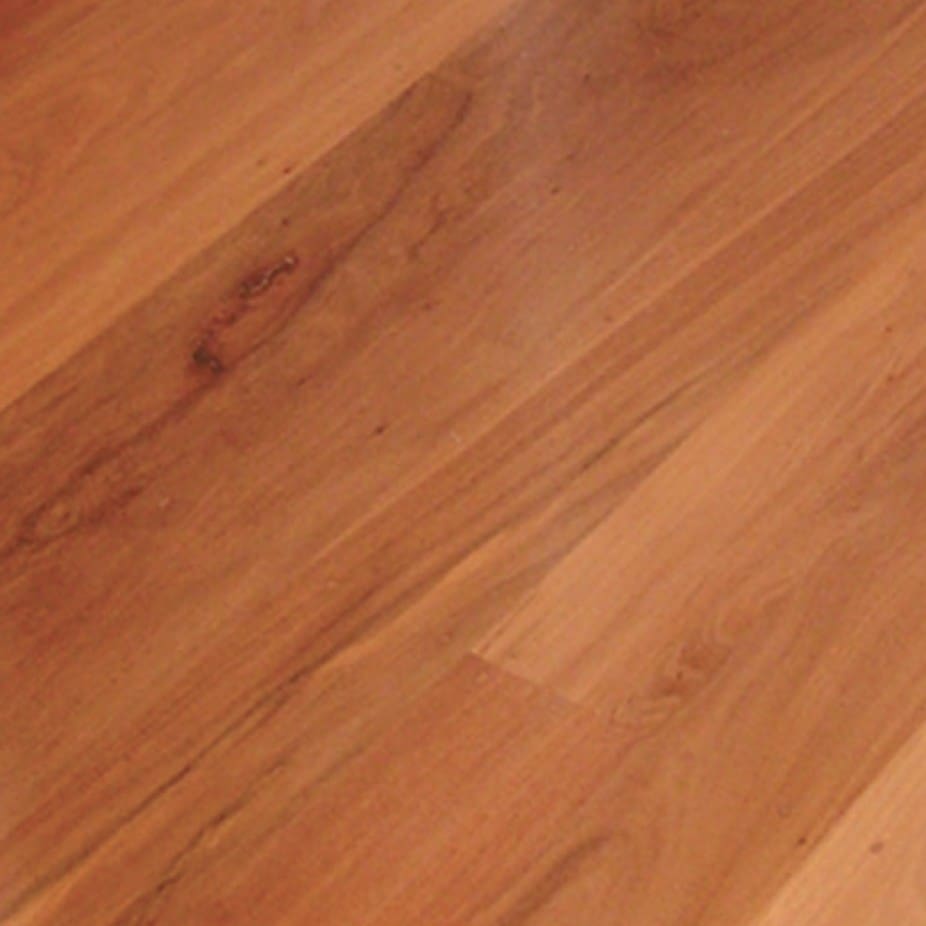
Penetrating oil
Curing oils and alkyds
Curing oils are natural vegetable oil blends that harden (cure) by reacting with oxygen in the air. Curing is enhanced by incorporation of metal ‘dryers’ such as cobalt and zinc that speed the slow hardening reaction with oxygen in the air. Contractors must take care as contaminated rags and sanding dust can spontaneously catch fire (these should be moved outside the building and damped down). These are film forming and are one of the earliest types of floor coatings. Good colour enhancement of the timber is a feature but some types may be very slow when curing in cold weather. Buff burnishing of the oil into the surface can allow floors to be used soon after they have been coated. On-going maintenance is higher than for other types of coatings.
Alkyds are based on reacting vegetable curing oils with a synthetic resin. This creates products with improved film build and gloss properties. As with the curing oils they can be slow when curing in colder weather. Colour enhancement of timber is a key property as is ease of application. Alkyds are generally spirit or turpentine based with intermediate VOC levels.
Urethane modified oils
Also commonly referred to as oil modified urethanes (OMUs), these are formed from the reaction of an oil with a urethane to form a copolymer which is then dissolved in solvents. Properties vary depending on the ratio of oil to urethane. The greater the oil ratio, the more flexible, and lower durability or wear resistance.
Conversely the higher the urethane content, the harder the film and greater the wear resistance. Use of these products has increased as they are more resistant to edge bonding than the moisture cure urethanes. They optimise timber colour enhancement and wear resistance performance is considered intermediate between the curing oils and polyurethanes, as are maintenance and refurbishment requirements. VOC levels are on the higher side. However, some water-based urethane modified oils are also available with low VOC levels. The water-based products provide reduced timber colour enhancement and may not have the durability of the solvent based products.
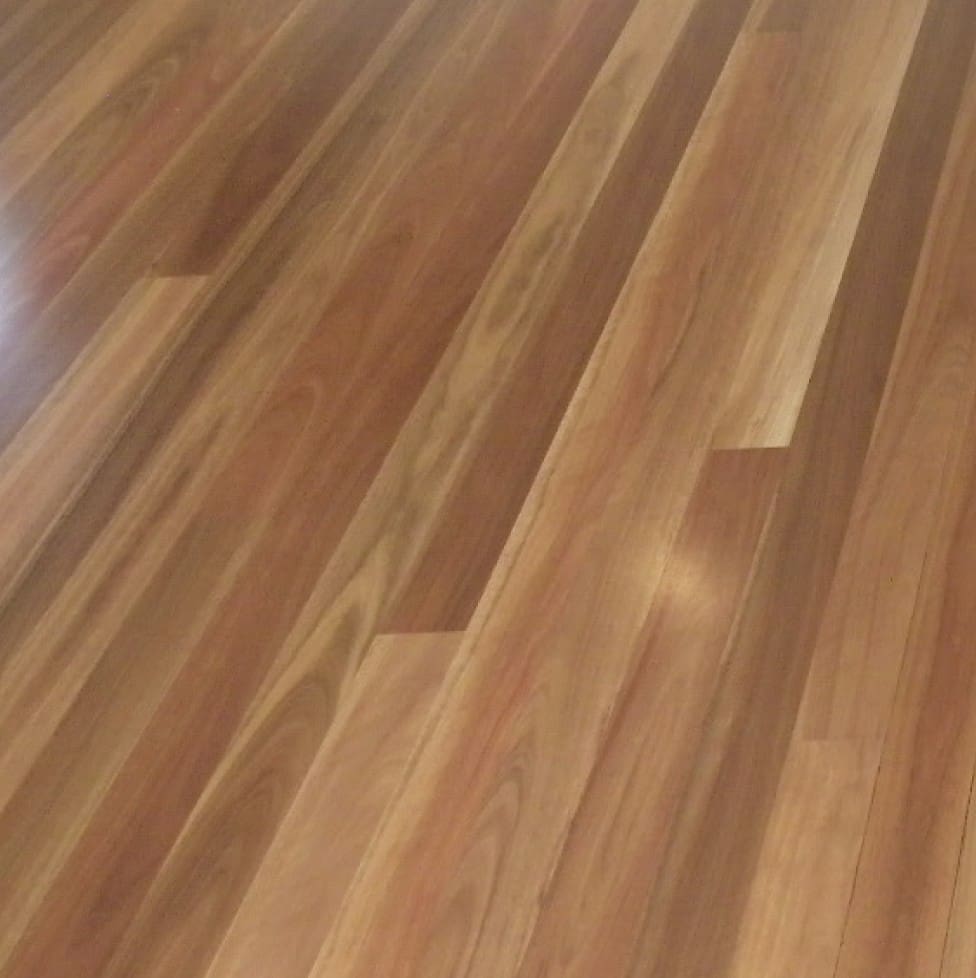
Oil-modified urethane
Acid catalysed coatings
The principal use of this class of coatings is in furniture coating, although some use occurs with timber floors. Advantages are that it is fast drying and initial cure such that multiple coats can be applied in the one day but full curing takes some days. They produce a richer, darker colour in the coated timber and their rejection resistance is good. The main disadvantage is their very strong odour. Their high VOCs are mainly ethanol (ethyl alcohol).
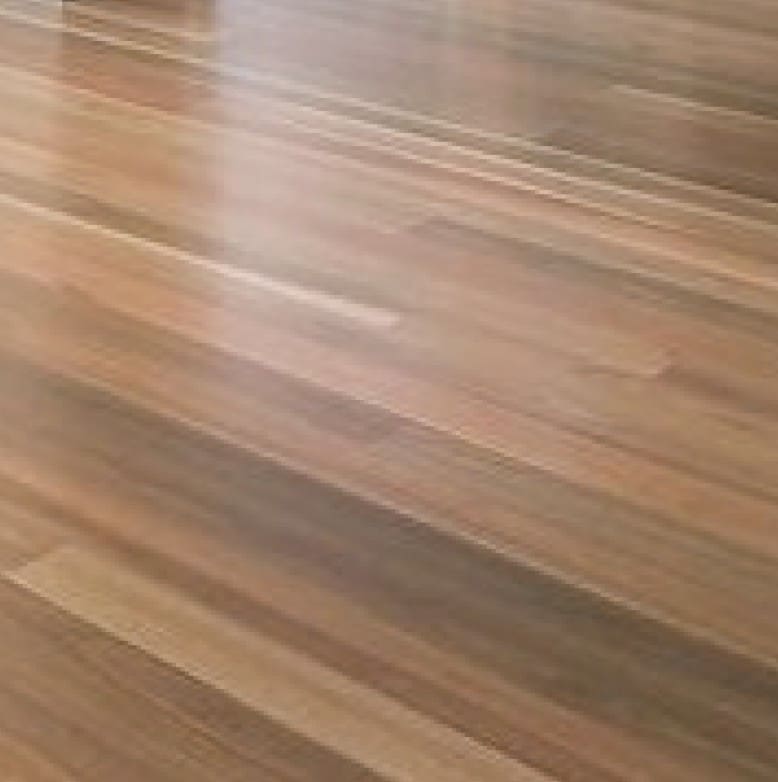
Acid catalysed coating
Polyurethane – solvent-based
This class may be a 1 pack moisture cure (MC) polyurethane where cure is achieved by a reaction of isocyanate with moisture in the air, or a 2 pack that utilises a polyol component and a polyisocyanate component which react together when the two are mixed.
The solvent-based polyurethanes are the toughest and most hard wearing and have the highest gloss levels of all the timber floor coatings classes. Disadvantages can be increased risk of edge bonding, high VOC and the need for particular care when using them due to the fact that the isocyanate components of both types (and many water-borne cross linkers) are respiratory sensitisers.
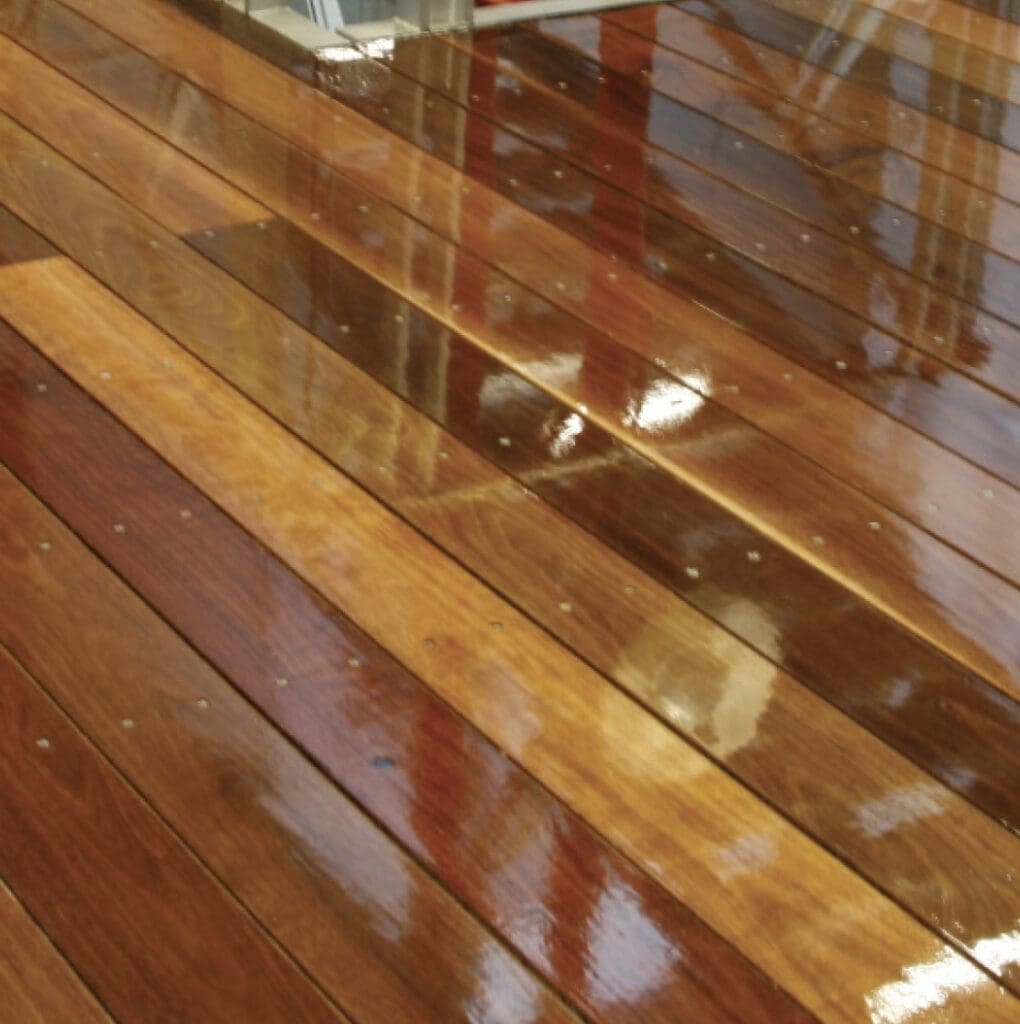
One pack solvent-based polyurethane.
Polyurethane – water-based
- Water-based polyurethanes have the most diverse range of sub-categories. The polymer bases used include:oil-modified urethane
- acrylic / polyurethane blends
- co-polymer acrylic-urethane
- 100% polyurethane
Additionally, each group may be available in a 1 pack or a 2 pack. A few 1 packs still feature a polyazeridine crosslinker which is a class 2 carcinogen and care when using it is advised. Most 2 packs use a polyisocyanate hardener which also requires care in use.
On-floor performance (wear resistance or durability) can vary markedly within this class and as a result greater care is required in selection of a particular finish.
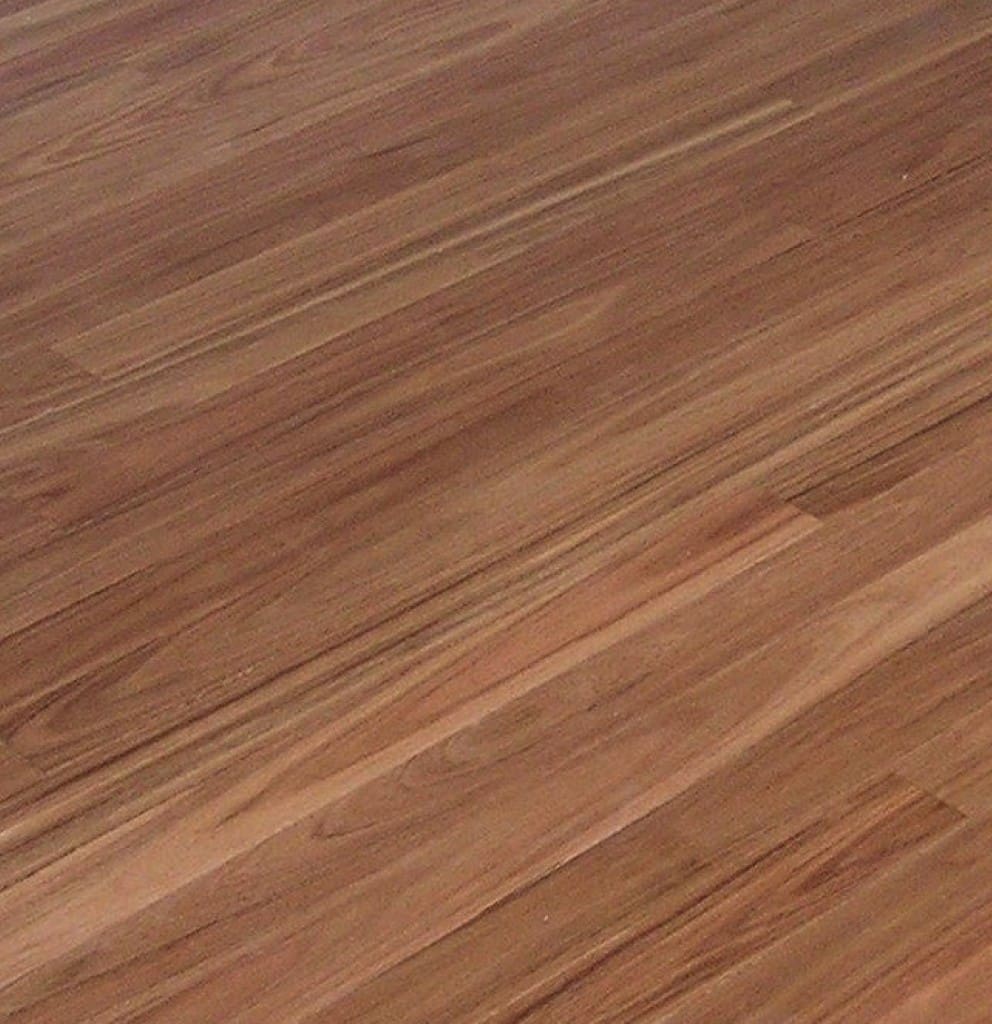
Water based polyurethane
Two pack types are generally superior to 1 pack in this regard. The Taber (wear resistance) test is a meaningful comparison test for wear resistance within this class. Key advantages are low solvent fumes (low VOCs) when they are being applied and water clean-up of tools. This leads to them being promoted as being less hazardous (toxic). One pack types are less hazardous to use than 2 packs as they do not use a hazardous hardener. They also have good edge bonding resistance. Disadvantages may include increased tendency for application marks and some products can develop ‘tram lining’ (white stretch effect) at board edges as the floorboards expand and contract.
Fast dry sealers
These high-solvent content sealers are usually based on a vinyl-type polymer combined with fast-drying solvents. Their intent is to seal the surface and the gaps between boards to reduce the tendency for following coatings to soak into the timber surface. They are generally used with solvent-based film forming coatings; some types can also be used under water-based coatings.
Advantages of using fast dry sealers include the ability to complete all the needed final coatings within the one day. Disadvantages can be a lower final coating film thickness than if all coats had been made with the final coating system, lighter coated timber shades and higher solvent fume hazard during use due to their very high VOC content.
Quick reference guide
The following table is presented as a guide only. Performance of different coatings within the same class can vary markedly. Consult your coatings supplier for objective data on the product you may intend to use. Claims provided in writing by the supplier are always preferable.
Technology and Property |
Penetrating Oils |
Hard Wax Oils |
Oil Alkyd (e.g. Tung Oil) |
Oil Modified Urethane |
Solvent |
Solvent |
Waterborne PU |
Waterborne |
Technical Properties |
||||||||
Durability |
Low - Med |
Med |
Low |
Med |
High |
High |
Med |
Med - High |
Typical expected years to requiring a refurbishment coat in a more severe wear situation |
1-2 |
1 – 6 |
3 |
4 |
6 |
6 |
4 - 6 |
5 - 6 |
Maintenance requirement - |
Low -High |
Low - High |
Med |
Medium |
Low |
Low |
Low |
Low |
Repairability of localised damage |
Good |
Good |
Difficult |
Difficult |
Very difficult |
Very difficult |
Difficult |
Difficult |
Earliest ‘with care’ use time @ 25 deg C |
5 days |
2 days |
3 days |
3 days |
1 day |
2 days |
1 day |
1 day |
Earliest re-occupancy time @ 25 deg C |
7 days |
7 days |
5 days |
5 days |
2 days |
3 days |
4 days |
3 days |
Ability to cure in cold and dry weather (non burnished) |
Low |
Low |
Medium |
Medium |
Good |
Good |
Fair |
Medium |
Ability to cure in cold and damp weather (non burnished) |
Low |
Low |
Low |
Low - Medium |
Good |
Medium |
Low |
Medium |
Rejection resistance |
Good |
Good |
V. Good |
Good |
Fair |
Fair |
V. Good |
V. Good |
Edge Bonding resistance |
V. Good |
V. Good |
V. Good |
V. Good |
Poor |
Poor |
V. Good |
Good |
Timber colour impact |
Darkens |
Yellow / honey |
Darkens |
Darkens |
Yellow / honey |
Yellow / honey |
Natural / pale honey |
Natural / pale honey |
Tram lining |
Nil |
Nil |
Nil |
Low |
Low |
Low |
High |
Medium |
Application marks resistance |
High |
Medium |
High |
Medium |
High |
High |
Poor to Medium |
Medium |
U.V. yellowing resistance |
Poor |
Fair |
Poor |
Poor |
Poor |
Poor |
Fair to Good |
Good |
Surface scuff resistance |
Poor |
Good |
Poor |
Poor |
Very Good |
Very Good |
Poor to Good |
Good to v. good |
Dust pimples from electrostatic |
Low |
Low |
Low |
Low |
High |
Medium |
Low |
Low |
Quilting resistance |
V. Good |
V. Good |
V. Good |
V. Good |
Medium |
Poor |
V. Good |
V. Good |
Grain raise effect on apply |
Low |
Low |
Low |
Low |
Low |
Low |
Medium |
Medium |
External use |
No |
No |
No |
No |
No |
No |
No |
No |
Safety, Health and Welfare (consulting the manufacturer’s MSDS / SDS is essential) |
||||||||
Odour – short term |
Noticeable |
Low |
Medium |
Medium |
V. High |
V. High |
Low |
Low - Medium |
V.O.C. – solvent content – grams per L |
0 – 800 |
0 - 480 |
600 - 700 |
600 – 700 |
500 – 550 |
300 – 600 |
35 – 190 |
85 - 190 |
Breathing equipment needed in use per MSDS |
Cartridge type |
Cartridge type |
Cartridge type |
Cartridge type |
Cartridge type with daily change |
Cartridge type with daily change |
No |
Cartridge type |
Contains listed or suspect carcinogen |
No |
Suspect white spirits in some |
Suspect white spirits |
Suspect – white spirits |
Yes – TDI |
Yes – TDI |
No |
Maybe if Part B is Polyazeridine |
Asthma and respiratory warning |
Yes |
Yes |
Yes |
Yes |
Yes |
Yes |
No |
Yes |
Flammability |
Low -High |
Low - High |
Low |
Low |
V. High |
v. High |
Nil |
Nil |

